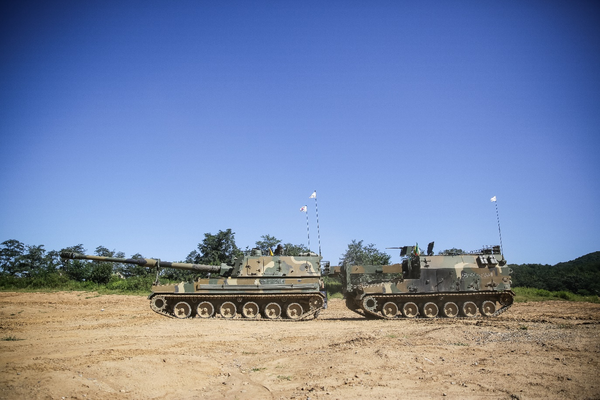
Korean defense giant poised to export K9 self-propelled howitzers
The Australian government announced Sept. 3 that it had chosen South Korea’s Hanwha Defense to supply 30 self-propelled howitzers and 15 armored ammunition resupply vehicles along with their supporting systems.Australia plans to release the request for tender to preferred bidder Hanwha, which developed K9 self-propelled howitzers and K10 armored ammunition resupply vehicles.In response, Hanwha plans to submit a tender. The final contract would be signed after price negotiation. The Australian government’s budget of the arms procurement project is up to AUD 1.3 billion ($950 million). After concluding the mega-sized deal, Hanwha Defense is poised to build the vehicles in the Geelong region and grow local skills, thus creating up to 350 jobs.The K9 is a 52-caliber, 155mm platform that takes advantage of current and emerging 155mm munitions technologies. It has a crew of four or five depending on the configuration, with an ammunition capacity of up to 48 rounds and accompanying modular charge systems. The K10 is a largely robotized system built on the same chassis as the K9. It holds 104 rounds of 155mm ammunition and is designed to provide ammunition resupply under armor and forward to the artillery unit.“Through this project, this government is delivering the capability army needs, while creating local jobs in and around Geelong that will grow our highly-skilled workforce,” Australia’s Defense Minister Linda Reynolds said in a statement. Hanwha Defense also expressed its hype.“In close cooperation with the Commonwealth of Australia, we intend to establish a significant manufacturing base in the Geelong region which will build the K9 and K10 fleets and provide a sovereign support capability for the whole life of the Huntsman fleet,” Hanwha Defense CEO Lee Sung-soo said.Fresh momentum for Hanwha's Redback?
Observers point out that the imminent exports of the K9 and K10 bode well for the Seoul-based company, which also competes for another multi-billion-dollar project there.Under the Land 400 Phase 3 project, Canberra strives to procure about 45 new tracked armored vehicles worth about $4.6 billion.Last September, Hanwha’s Redback infantry fighting vehicle beat global rivals to become one of two final candidates of the project. Also included in the shortlist is the Lynx of Germany’s Rheinmetall.Hanwha built two prototypes of Redback, which reached Australia late last month. Another one will be shipped to Australian shores later this year.The three trial products will go through 10-month performance assessments by the Australian military, which plans to single out the preferred tenderer in 2022.It seems that Australia’s decision to pick Hanwha Defense for its self-propelled howitzers supply program prompts watchers to believe that the Korean company may be able to beat its German competitor two years later.Of note is that the Redback, which is named after an Australian venomous spider, employs the K9 technology _ it is equipped with a 30mm auto-cannon and the K9 self-propelled artillery’s power pack solution. The 42-ton vehicle is capable of hosting a crew of 11, including eight foot soldiers. It also boasts of a top road speed of 65 kilometers per hour and an operational range of 500 kilometers.They are tried-and-tested systems in South Korea, which is still technically at war with belligerent North Korea, as the Korean War (1950-53) was finished by an armistice, not by a peace treaty.키워드
이 기사를 공유합니다
Kevin Chung
(jumphigher55@aol.com)

